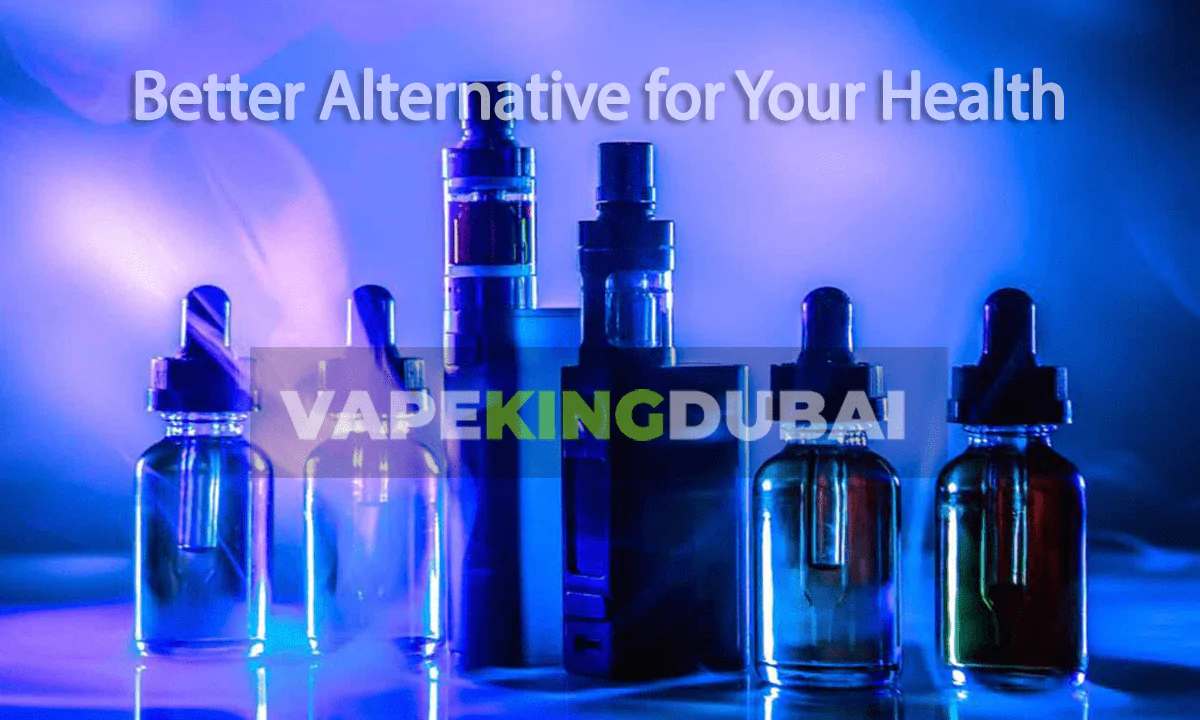Smoking is one of the leading causes of preventable death and disease in the world. According to the World Health Organization, more than 8 million people die every year from tobacco use, and about 1.2 million of them are non-smokers exposed to secondhand smoke. Smoking can cause various types of cancer, cardiovascular diseases, respiratory diseases, and other chronic conditions.
However, there is a growing trend of people switching to vaping as a potential healthier alternative to smoking. Vaping is inhaling and exhaling an aerosol, or vapor, produced by an electronic device called an e-cigarette. Unlike traditional cigarettes, e-cigarettes do not burn tobacco but heat a liquid that contains nicotine, flavorings, and other chemicals.
In this blog post, we will explore the health benefits of vaping compared to traditional smoking. We will look at the science behind vaping, the reduction of harmful chemical exposure, the control and gradual reduction of nicotine intake, the impact on respiratory health, and the safety measures and responsible vaping practices. We will also provide useful resources and links for further information and guidance.
Understanding the Risks of Smoking
Before we dive into the benefits of vaping, let us first review the well-established health risks associated with traditional smoking. Smoking involves the combustion of tobacco, which produces thousands of chemicals, many of which are toxic, carcinogenic, or both. Some of the most harmful chemicals in cigarette smoke include:
- Tar: A sticky substance that coats the lungs and damages the cilia, which are tiny hair-like structures that help clear mucus and debris from the airways.
- Carbon monoxide: A colorless, odorless gas that reduces the amount of oxygen in the blood, leading to heart and brain damage.
- Nicotine: A highly addictive substance that stimulates the central nervous system and increases blood pressure, heart rate, and breathing rate.
- Formaldehyde: A known human carcinogen that can cause nasal and lung cancer, as well as irritation of the eyes, nose, and throat.
- Benzene: A volatile organic compound that can cause leukemia and other blood disorders.
- Acrolein: A chemical that can cause lung damage and chronic obstructive pulmonary disease (COPD).
These are just some of the many harmful chemicals in cigarette smoke, which can affect not only the smoker but also the people around them. Secondhand smoke is a mixture of the smoke exhaled by the smoker and the smoke emitted from the burning end of the cigarette. It contains the same toxic chemicals as the smoke inhaled by the smoker and can cause serious health problems for non-smokers, especially children and pregnant women.
The health risks of smoking are well-documented and widely recognized by the scientific and medical communities. According to the Centers for Disease Control and Prevention (CDC), smoking can increase the risk of:
- Lung cancer and other types of cancer, such as mouth, throat, oesophagus, stomach, pancreas, kidney, bladder, cervix, and colon cancer.
- Heart disease and stroke, are the leading causes of death in the United States.
- Chronic obstructive pulmonary disease (COPD), which includes chronic bronchitis and emphysema.
- Asthma and other respiratory infections, such as pneumonia and tuberculosis.
- Diabetes and its complications, such as nerve damage, kidney failure, and blindness.
- Erectile dysfunction and reduced fertility in men, and premature menopause and infertility in women.
- Low birth weight, preterm delivery, stillbirth, and sudden infant death syndrome (SIDS) in pregnant women and their babies.
Smoking also affects the appearance and quality of life of smokers, as it can cause:
- Premature aging and wrinkles on the skin.
- Stained teeth and bad breath.
- Gum disease and tooth loss.
- Hair loss and baldness.
- Reduced sense of taste and smell.
- Increased risk of infections and illnesses.
- Reduced physical fitness and endurance.
- Increased stress and anxiety.
- Reduced mental performance and memory.
Given the overwhelming evidence of the negative effects of smoking on health, it is no wonder that many smokers want to quit or reduce their tobacco consumption. However, quitting smoking is not easy, as nicotine is a highly addictive substance that can cause withdrawal symptoms, such as cravings, irritability, mood swings, insomnia, anxiety,
depression, and weight gain. Many smokers also find it hard to break the habit and the psychological association of smoking with certain situations, such as after a meal, with a drink, or with friends.
This is where vaping comes in as a potential harm-reduction strategy. Vaping can provide a similar sensation and satisfaction as smoking, without exposing the user to the same level of harmful chemicals and health risks. Vaping can also help smokers gradually reduce their nicotine intake and dependence, and eventually quit smoking altogether.
The Science Behind Vaping
To understand how vaping can be a healthier alternative to smoking, we need to understand how vaping works as opposed to traditional smoking. As mentioned earlier, vaping involves the use of an electronic device called an e-cigarette, which consists of three main components:
- A battery: This provides the power to heat the liquid and produce the vapor.
- An atomizer: This is the heating element that vaporizes the liquid.
- A cartridge or tank: This holds the liquid that contains nicotine, flavorings, and other chemicals.
The user inhales the vapor through a mouthpiece, which activates a sensor that triggers the battery to heat the atomizer. The atomizer then vaporizes the liquid, creating an aerosol that resembles smoke. The user exhales the vapor, which dissipates quickly in the air.
The liquid used in e-cigarettes is also known as e-liquid, e-juice, or vape juice. It is usually composed of four main ingredients:
- Propylene glycol (PG): This is a synthetic organic compound that is used as a solvent, a humectant, and a carrier for flavorings and nicotine. It is also used in food, cosmetics, and pharmaceutical products. It is generally considered safe for human consumption, but it can cause some minor side effects, such as dry mouth, throat irritation, and allergic reactions in some people.
- Vegetable glycerin (VG): This is a natural organic compound that is derived from plant oils, such as palm, soy, or coconut. It is used as a thickener, a sweetener, and a humectant. It is also used in food, cosmetics, and pharmaceutical products. It is generally considered safe for human consumption, but it can cause some minor side effects, such as dry mouth, throat irritation, and allergic reactions in some people.
- Nicotine: This is a stimulant that is naturally found in tobacco plants. It is the main addictive substance in cigarettes, and it is responsible for the pleasurable effects and withdrawal symptoms of smoking. It can also have some positive effects, such as enhancing mood, alertness, and cognition.
However, it can also have some negative effects, such as increasing blood pressure, heart rate, and breathing rate, and causing nausea, dizziness, and headaches. Nicotine is also toxic in high doses and can cause poisoning or death if ingested or absorbed through the skin. - Flavorings: These are artificial or natural substances that are added to the e-liquid to give it a specific taste and aroma. Thousands of different flavors are available, ranging from tobacco and menthol to fruits and desserts, to candy and drinks. Some of the most popular flavors include strawberry, vanilla, chocolate,
coffee, and mint. Flavorings are also used in food, cosmetics, and pharmaceutical products, and are generally considered safe for human consumption. However, some flavorings may contain chemicals that are harmful when inhaled, such as diacetyl, which can cause a serious lung condition called bronchiolitis obliterans, or popcorn lung.
The proportion of these ingredients can vary depending on the brand, type, and preference of the e-liquid. Some e-liquids may contain more PG than VG, or vice versa, which can affect the vapor’s viscosity, flavor, and throat hit. Some e-liquids may also contain other additives, such as water, alcohol, caffeine, vitamins, or herbs, which can alter the effects and the safety of the vapor.
The amount of nicotine in the e-liquid can also vary depending on the strength and the concentration of the e-liquid. The nicotine strength is usually measured in milligrams per milliliter (mg/mL) and can range from zero to 50 mg/mL or more. The nicotine concentration is usually measured in percentage and can range from zero to 5% or more. For example, an e-liquid with a nicotine strength of 18 mg/mL has a nicotine concentration of 1.8%.
The amount of nicotine that the user absorbs from the vapor depends on several factors, such as the nicotine strength and concentration of the e-liquid, the size and frequency of the puffs, the type and power of the e-cigarette, and the user’s inhalation technique and metabolism. Generally, the nicotine absorption from vaping is lower than from smoking, as the vapor does not deliver.



